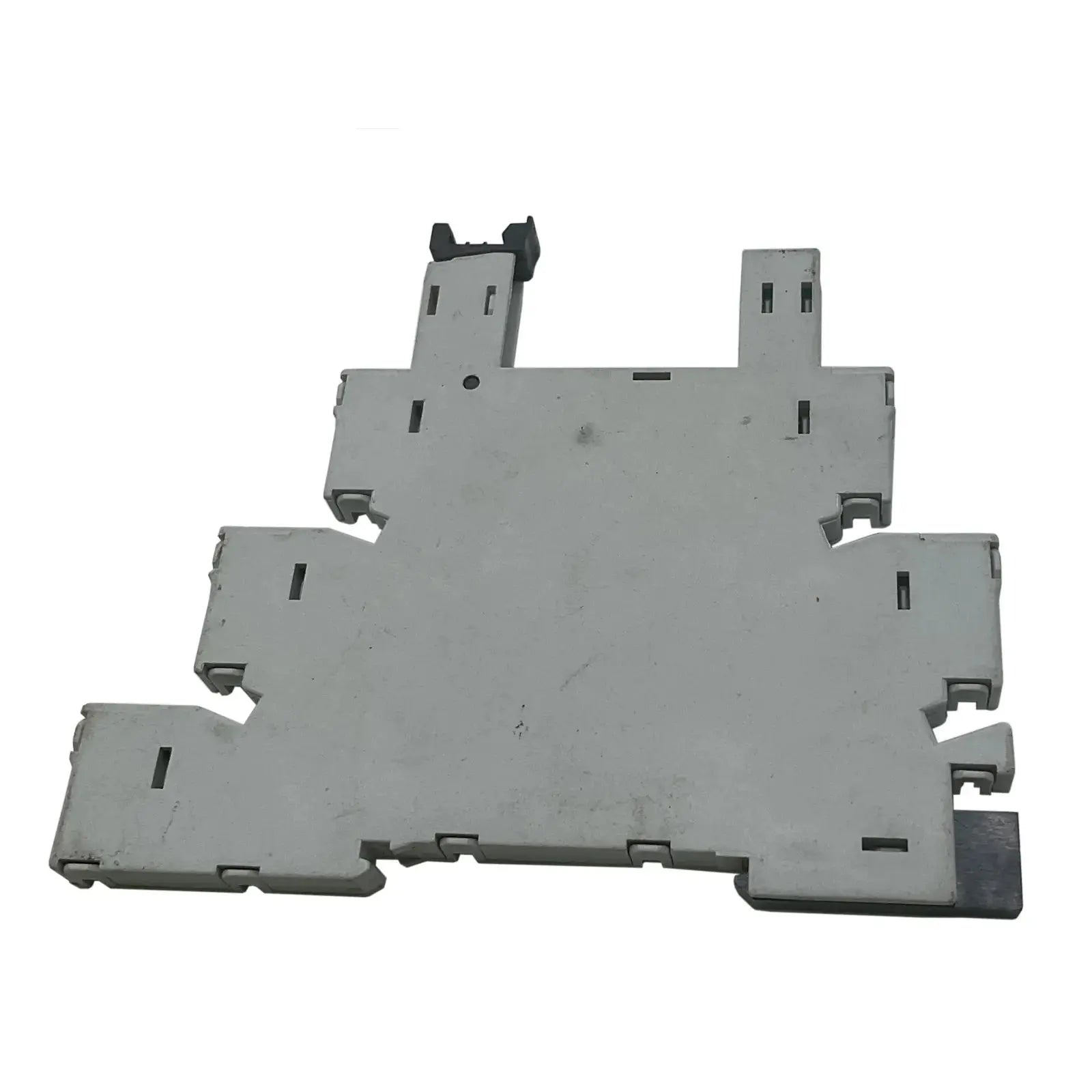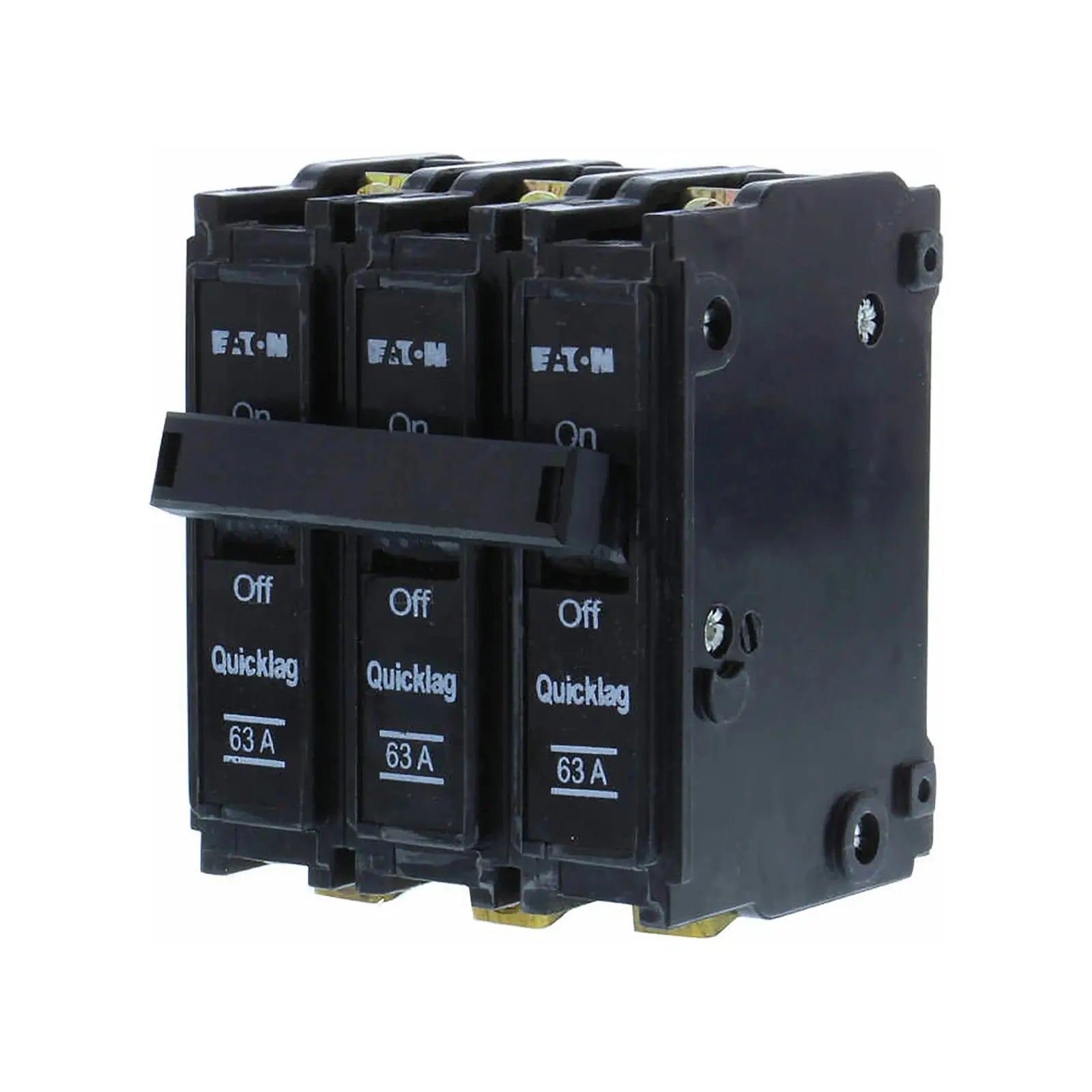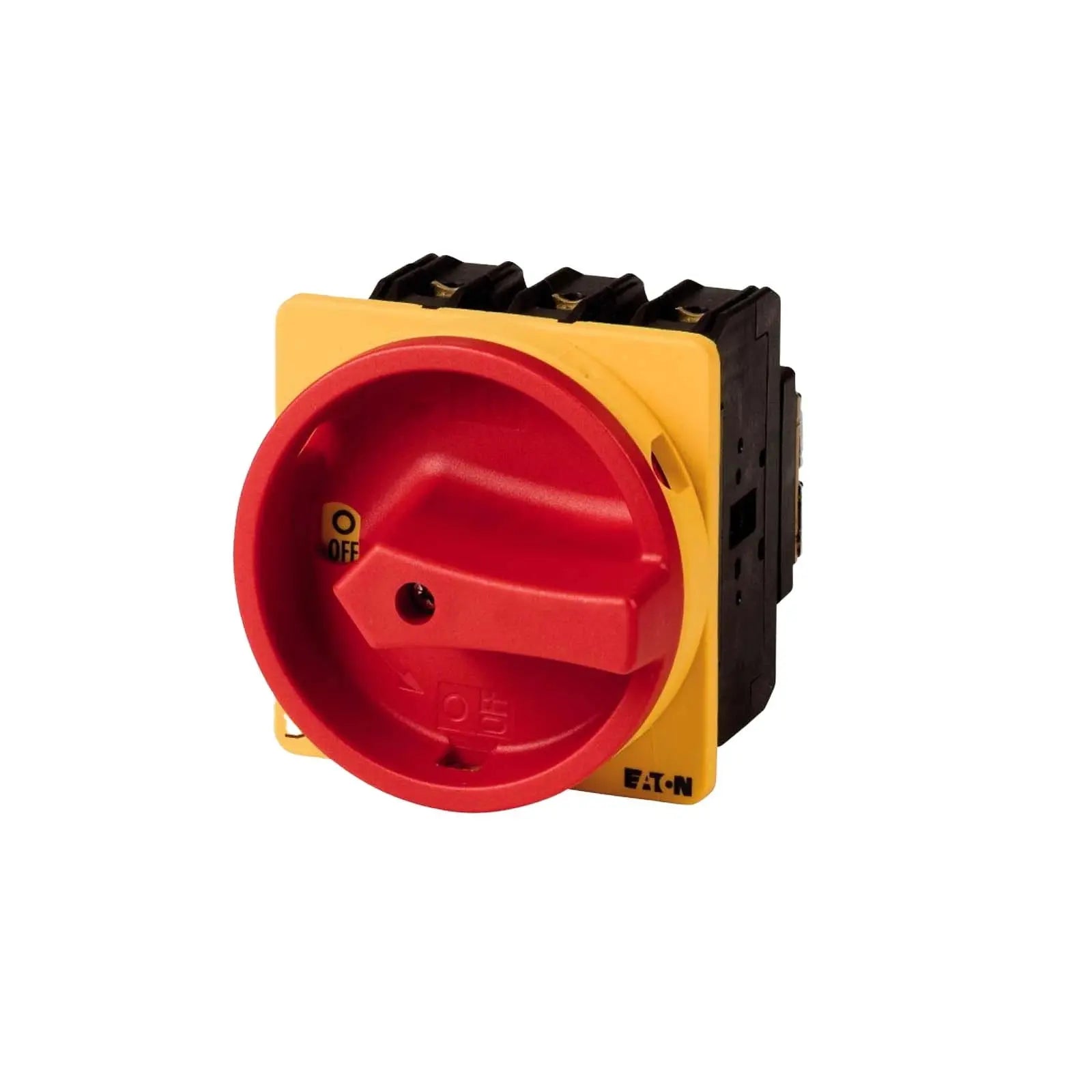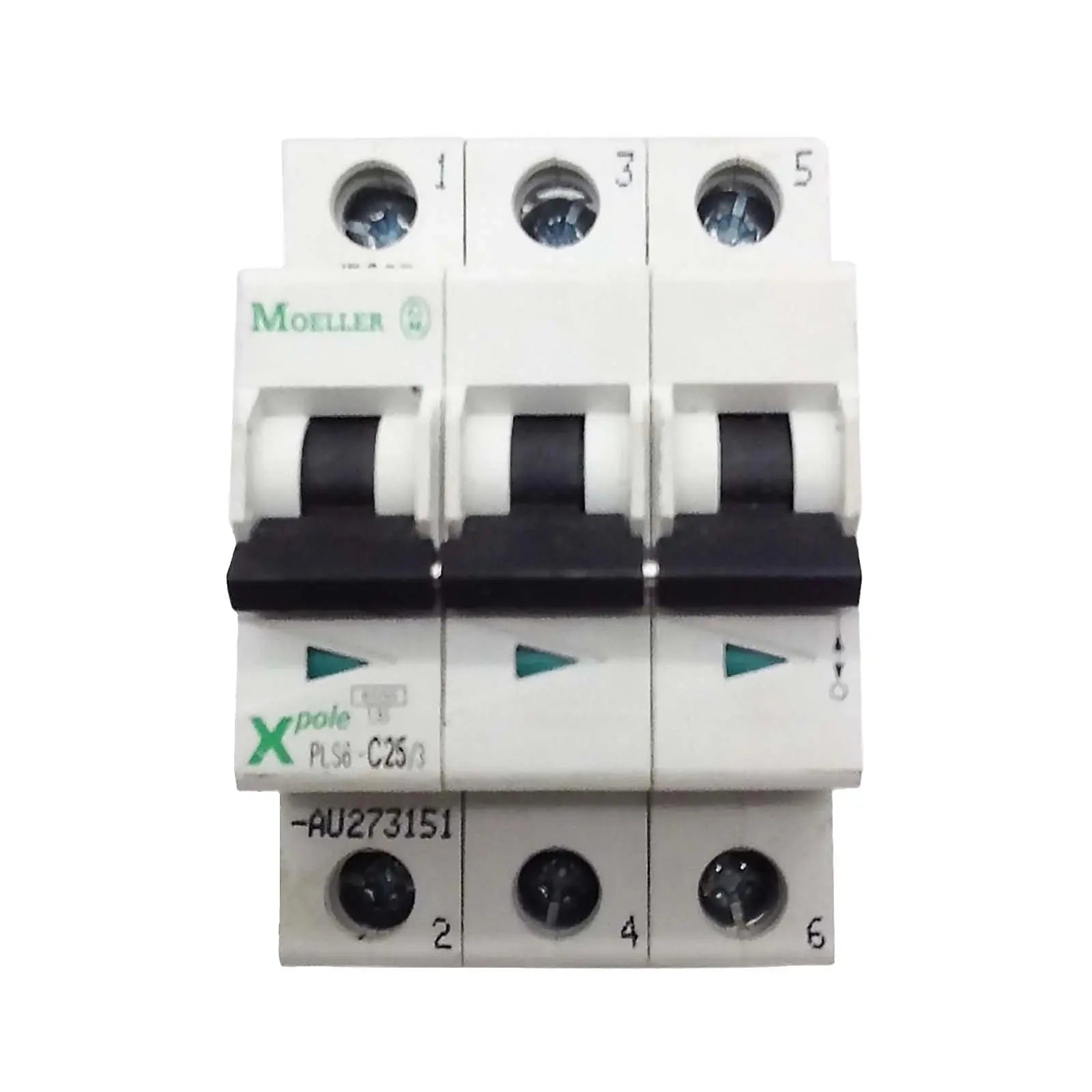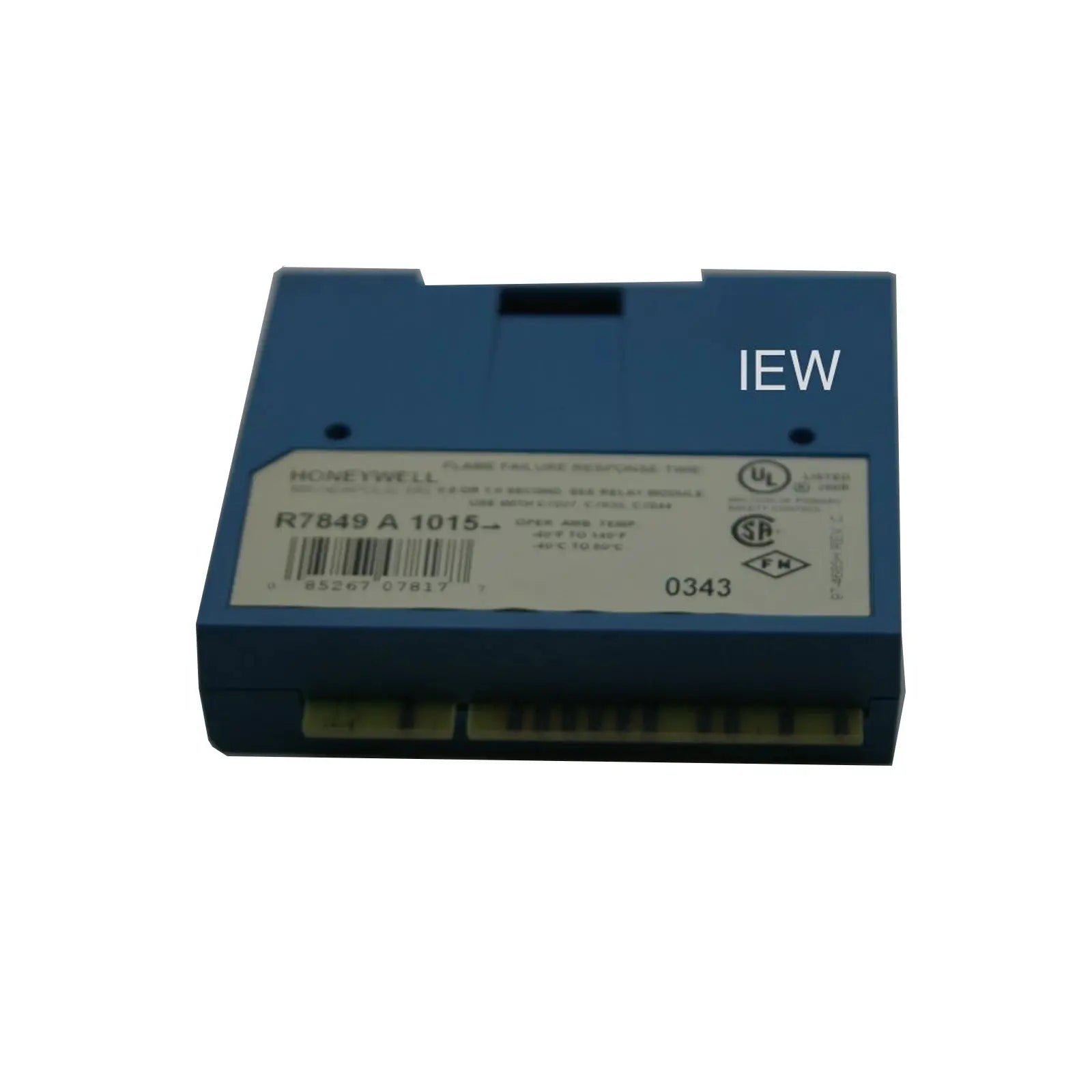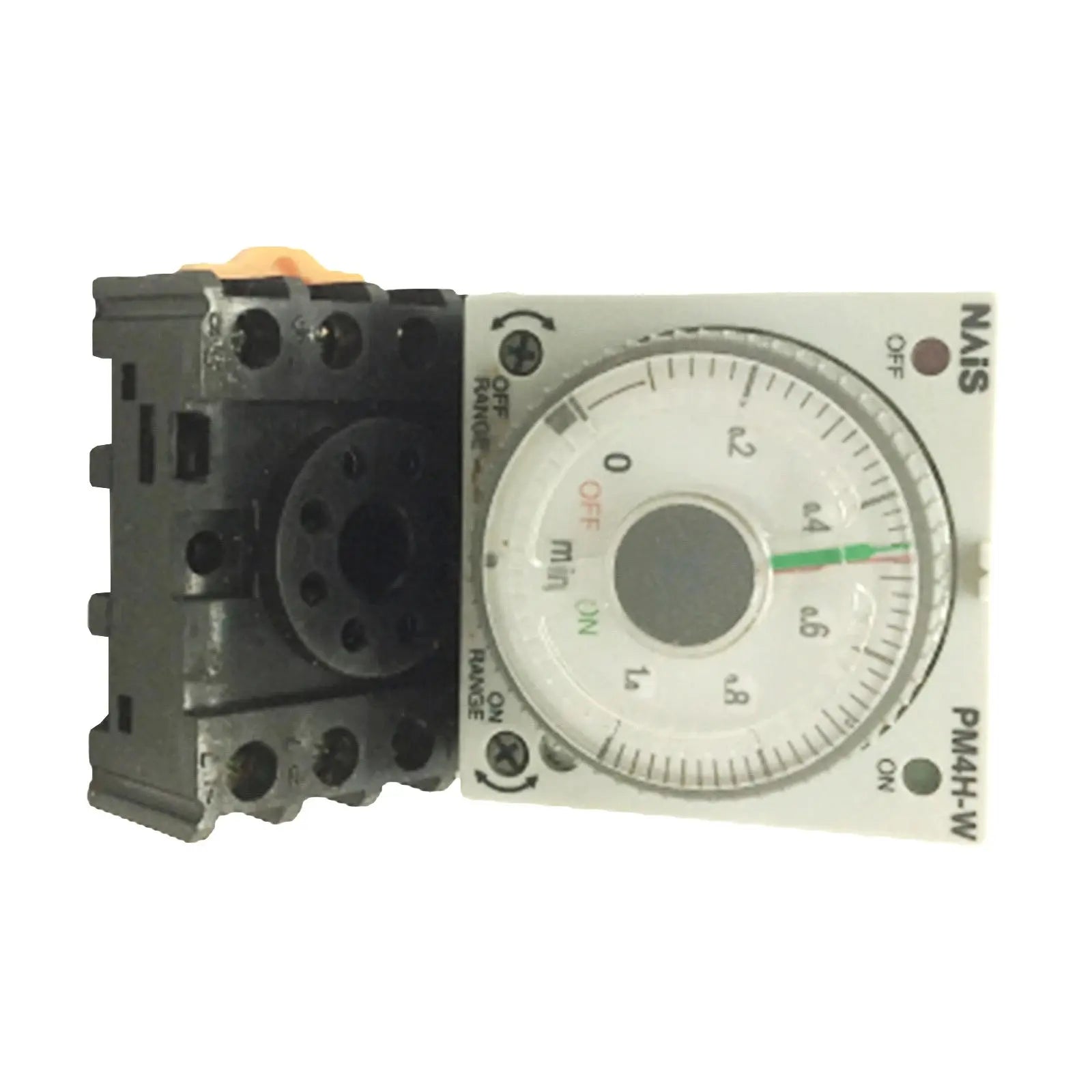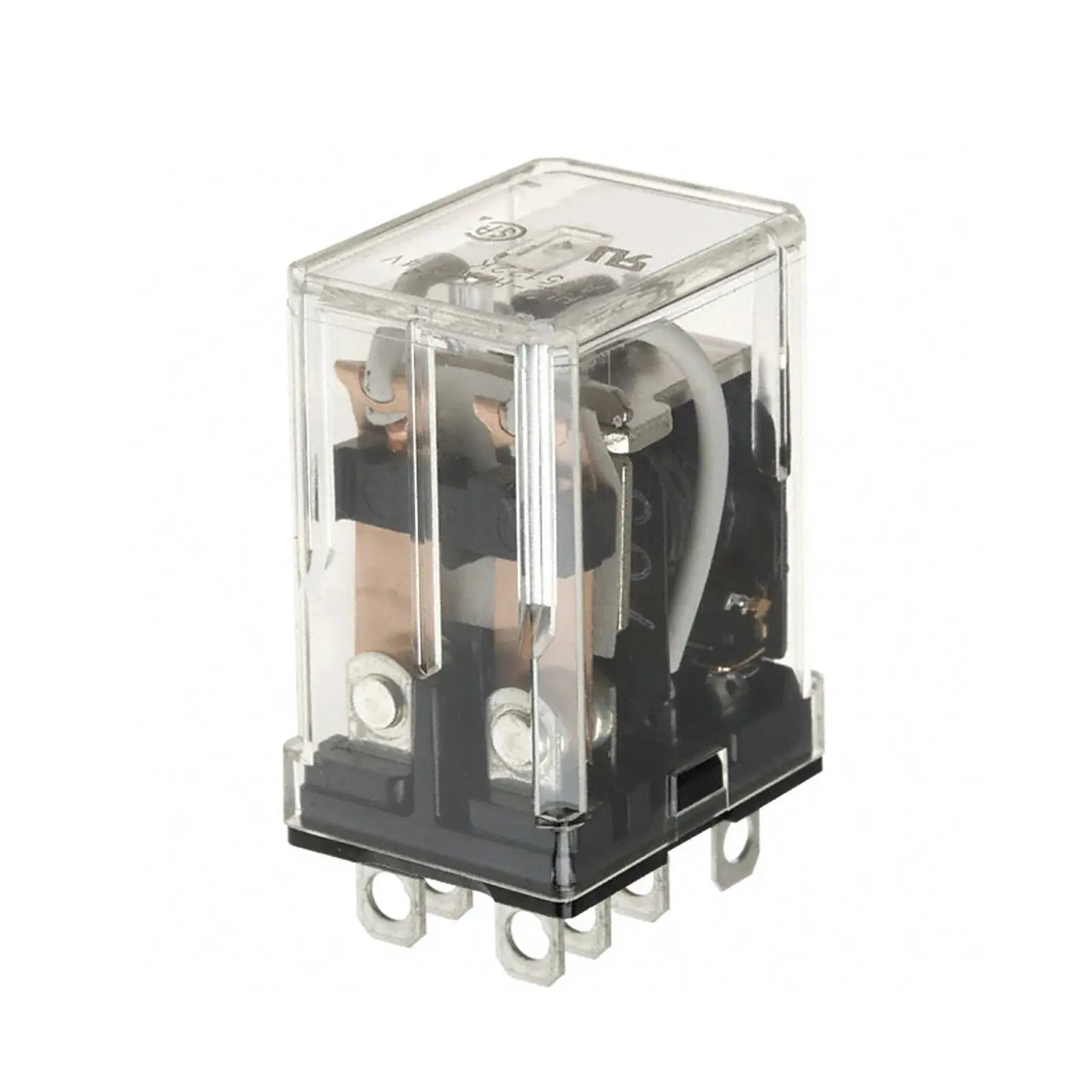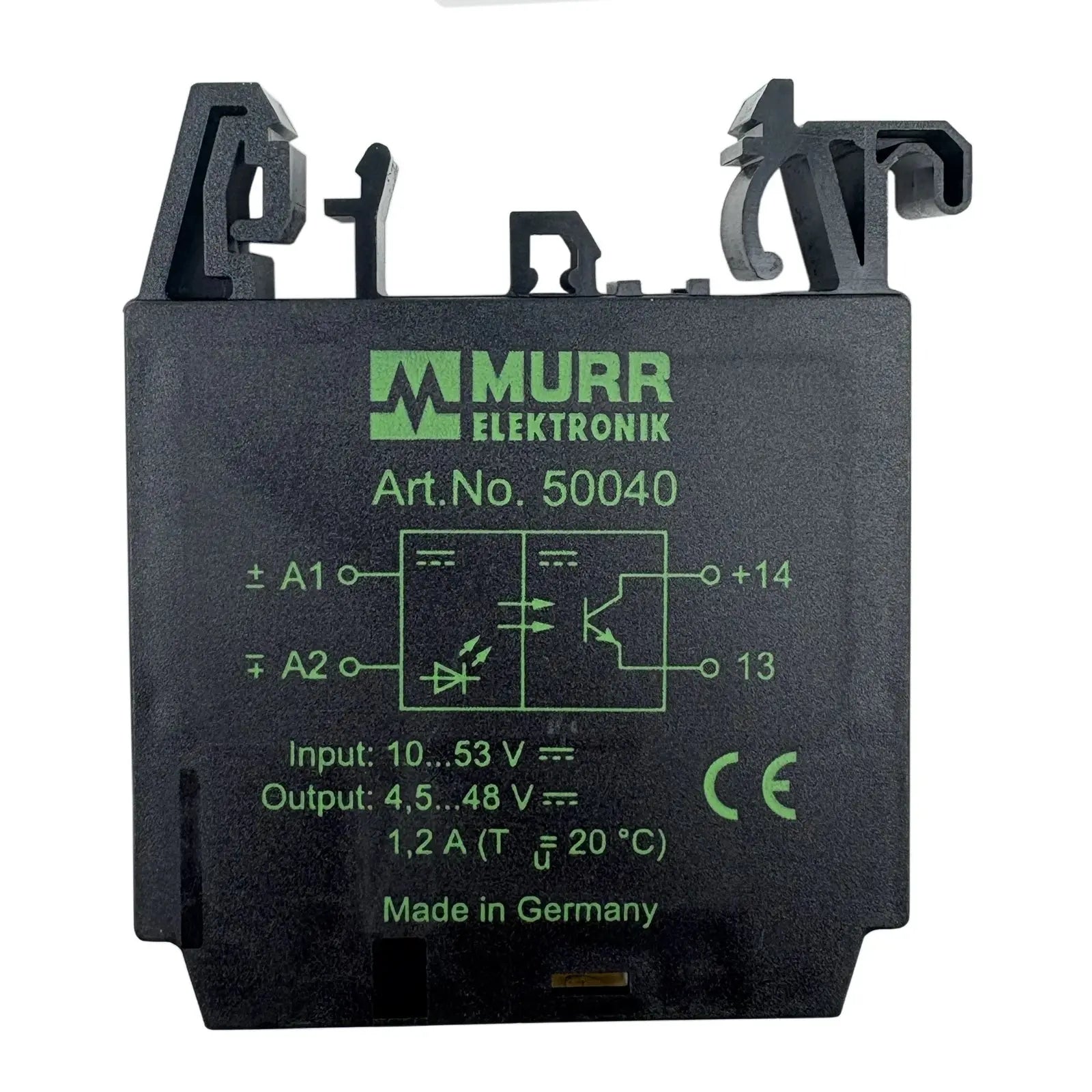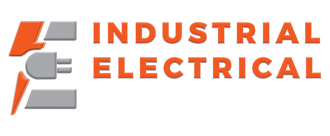Relais de contrôle pour équipements de contrôle moteur : performances et sécurité optimales
Dans le monde des équipements de contrôle moteur, les relais de contrôle jouent un rôle crucial pour garantir des performances et une sécurité optimales. Comprendre leur fonction et leur importance est essentiel pour quiconque travaille avec de tels équipements. De plus, savoir comment optimiser les performances, prendre en compte les aspects de sécurité, choisir le bon relais de contrôle et se tenir informé des tendances futures peut considérablement améliorer l'efficacité et la longévité des systèmes de contrôle moteur.
Comprendre les relais de contrôle
Les relais de contrôle sont des dispositifs électromécaniques qui agissent comme des interrupteurs dans les circuits de commande des moteurs. Ils contrôlent le flux de courant électrique vers divers composants, tels que les moteurs, les solénoïdes et les contacteurs. En surveillant des paramètres spécifiques et en réagissant en conséquence, les relais de contrôle permettent un contrôle précis des équipements motorisés.
Définition et fonction des relais de contrôle
Un relais de commande est un interrupteur électrique qui fonctionne en fonction des signaux d'entrée reçus d'autres équipements. Il est constitué d'une bobine électromagnétique et d'un ou plusieurs jeux de contacts. Lorsqu'elle est alimentée, la bobine génère un champ magnétique qui rapproche les contacts, permettant ainsi la circulation du courant. Ce mécanisme permet aux relais de commande de commuter entre différents circuits électriques, contrôlant ainsi le fonctionnement des moteurs et autres appareils.
Importance des relais de contrôle dans les équipements de contrôle des moteurs
Les relais de contrôle sont essentiels aux équipements de commande des moteurs, car ils peuvent gérer des courants importants, isoler les circuits et assurer un fonctionnement fiable. Ils servent d'interface entre le système de commande et le moteur, permettant un contrôle sûr et efficace. Sans relais de contrôle, le fonctionnement des moteurs et autres composants serait difficile, rendant l'ensemble du système de commande moteur inefficace.
L'un des principaux avantages des relais de contrôle est leur capacité à gérer des courants importants. Ils sont donc parfaitement adaptés au contrôle des moteurs, qui nécessitent souvent une puissance électrique élevée. En gérant efficacement le flux de courant, les relais de contrôle préviennent les dommages au moteur et garantissent son bon fonctionnement.
Outre leur capacité à gérer le courant, les relais de contrôle jouent également un rôle crucial dans l'isolation des circuits. Ils permettent ainsi de séparer différents circuits électriques, évitant ainsi les interférences et garantissant le fonctionnement indépendant de chaque composant. Grâce à ce niveau d'isolation, les relais de contrôle améliorent la fiabilité et la sécurité globales des équipements de commande des moteurs.
De plus, les relais de contrôle offrent un fonctionnement fiable, ce qui en fait un choix privilégié dans de nombreux secteurs. Leur conception électromécanique garantit des performances constantes, même dans des environnements difficiles. Cette fiabilité est cruciale dans les applications de contrôle moteur, où toute défaillance ou dysfonctionnement peut entraîner des temps d'arrêt coûteux et des risques potentiels pour la sécurité.
En conclusion, les relais de contrôle sont des composants essentiels des circuits de commande des moteurs. Leur capacité à gérer des courants importants, à isoler les circuits et à assurer un fonctionnement fiable les rend indispensables pour un contrôle précis des équipements motorisés. Sans relais de contrôle, le fonctionnement efficace des moteurs et autres composants serait compromis, ce qui souligne l'importance de ces dispositifs électromécaniques dans le domaine de la commande des moteurs.
Obtenir des performances optimales avec les relais de contrôle
Pour garantir les meilleures performances des équipements de contrôle moteur, plusieurs facteurs clés doivent être pris en compte. Un entretien régulier et le respect des pratiques recommandées peuvent prolonger considérablement la durée de vie des relais de contrôle et des autres composants du système. De plus, il est essentiel de comprendre le rôle des relais de contrôle dans le maintien de performances optimales.
Facteurs clés pour une performance optimale
Une installation et un câblage corrects jouent un rôle essentiel pour obtenir des performances optimales des relais de contrôle. Le respect des instructions du fabricant et des normes industrielles permet d'éviter les problèmes causés par des connexions incorrectes. Il est également important de sélectionner des relais de contrôle adaptés à l'application spécifique, en tenant compte de facteurs tels que la tension, le courant et les conditions environnementales.
Conseils d'entretien pour les relais de contrôle
Un entretien régulier est essentiel pour maintenir les relais de contrôle en parfait état. Il est recommandé d'inspecter les relais de contrôle pour détecter toute surchauffe, vérifier les connexions desserrées et nettoyer les contacts. De plus, le remplacement rapide des relais ou composants usés peut prévenir les pannes et les arrêts du système. La mise en place d'un programme de maintenance préventive et la documentation des activités de maintenance peuvent garantir la fiabilité à long terme des relais de contrôle.
Un aspect important à prendre en compte pour optimiser les performances des relais de contrôle est l'utilisation de dispositifs de protection. Ces dispositifs, tels que les fusibles et les disjoncteurs, sont conçus pour protéger les relais de contrôle et l'ensemble du système contre les défauts électriques et les surcharges. L'intégration de dispositifs de protection au circuit permet de minimiser le risque d'endommagement des relais de contrôle dû à un courant excessif ou à des courts-circuits. Il est crucial de sélectionner les dispositifs de protection appropriés en fonction des exigences spécifiques du système, afin de s'assurer qu'ils sont capables d'interrompre le courant de défaut dans un délai sûr et acceptable.
Un autre facteur pouvant fortement influencer les performances des relais de contrôle est la qualité de l'alimentation électrique. Les fluctuations de tension ou de fréquence peuvent entraîner un comportement erratique des relais de contrôle, entraînant un fonctionnement peu fiable et des dommages potentiels. Pour atténuer ce problème, il est recommandé d'utiliser des régulateurs de tension ou des conditionneurs de puissance afin de stabiliser l'alimentation. Ces dispositifs contribuent à maintenir une tension et une fréquence constantes, garantissant ainsi aux relais de contrôle une alimentation propre et stable.
Considérations de sécurité pour l'utilisation de relais de contrôle
Bien que les relais de contrôle soient essentiels pour les équipements de commande des moteurs, il est crucial de comprendre les risques potentiels et de prendre les précautions nécessaires pour garantir la sécurité. En respectant les normes et réglementations de sécurité et en étant conscients des risques courants, les opérateurs peuvent minimiser les risques d'accidents et de blessures.
Risques potentiels et comment les éviter
Les relais de contrôle gèrent des courants élevés, susceptibles de présenter des risques tels que les chocs électriques et les incendies. Une isolation adéquate, l'utilisation d'équipements de protection et la mise en place de dispositifs de verrouillage de sécurité peuvent contribuer à atténuer ces risques. Des inspections et des tests réguliers permettent d'identifier les problèmes potentiels avant qu'ils ne deviennent des problèmes de sécurité graves.
Normes et réglementations de sécurité
Le respect des normes et réglementations de sécurité est crucial lors de l'utilisation de relais de contrôle. Familiarisez-vous avec les normes applicables, telles que celles de l'Occupational Safety and Health Administration (OSHA) et du National Electrical Code (NEC), pour garantir la conformité totale de vos équipements de contrôle moteur. La révision et la mise à jour régulières de vos protocoles de sécurité contribuent à minimiser les risques et à maintenir un environnement de travail sûr.
De plus, il est important de prendre en compte les facteurs environnementaux susceptibles d'affecter le fonctionnement sûr des relais de contrôle. Les températures extrêmes, l'humidité et les substances corrosives peuvent affecter les performances et la durée de vie des relais. Il est donc essentiel d'installer les relais de contrôle dans des boîtiers ou des armoires adaptés offrant une protection adéquate contre ces éléments.
De plus, une formation adéquate est essentielle pour toute personne travaillant avec des relais de contrôle. Les opérateurs doivent être formés à la manipulation et au fonctionnement sûrs des relais, ainsi qu'aux procédures de dépannage et de maintenance appropriées. Des cours de remise à niveau et des ateliers réguliers permettent de renforcer les connaissances et de maintenir les opérateurs informés des dernières pratiques de sécurité.
Sélection du relais de contrôle adapté à votre équipement
Le choix du relais de commande approprié est crucial pour la performance et la fiabilité globales des équipements de contrôle moteur. Un relais de commande agit comme le « cerveau » de l'équipement, garantissant l'envoi des signaux appropriés pour activer ou désactiver les différents composants. Sans un relais de commande correctement adapté, l'équipement risque de ne pas fonctionner de manière optimale, voire de connaître des dysfonctionnements.
Lors du choix d'un relais de contrôle, plusieurs facteurs importants sont à prendre en compte. Avant tout, il est essentiel d'évaluer les exigences de charge de votre équipement, notamment la tension et le courant nominal que le relais de contrôle doit supporter. Choisir un relais de contrôle de capacité insuffisante peut entraîner une surchauffe et une défaillance prématurée, tandis qu'un relais trop puissant peut engendrer des coûts inutiles.
Outre les exigences de charge, il est essentiel de prendre en compte les conditions environnementales de fonctionnement du relais de contrôle. Par exemple, si votre équipement est exposé à des températures extrêmes ou à une forte humidité, vous devez choisir un relais de contrôle spécialement conçu pour résister à ces conditions. Négliger cet aspect peut entraîner une défaillance prématurée et des réparations coûteuses.
Un autre facteur crucial à prendre en compte est la fiabilité et la réputation du fabricant de relais de contrôle. Choisir une marque reconnue et réputée vous garantit un produit de haute qualité, rigoureusement testé et dont la fiabilité a été prouvée. Investir dans un relais de contrôle d'un fabricant de confiance est judicieux pour éviter tout problème potentiel et garantir une satisfaction durable.
Bien que la prise en compte de ces facteurs soit importante, il est tout aussi crucial d'être conscient des erreurs courantes à éviter lors du choix des relais de contrôle. Une erreur fréquente est le mauvais dimensionnement, lorsque le relais de contrôle choisi est soit trop petit, soit trop grand pour les besoins de l'équipement. Cela peut entraîner un fonctionnement inefficace, une augmentation de la consommation d'énergie et des dommages potentiels à l'équipement.
Une autre erreur à éviter est de négliger la prise en compte des exigences de tension et de courant de l'équipement. Il est essentiel de choisir un relais de commande adapté aux spécifications de tension et de courant afin de garantir un bon fonctionnement et d'éviter tout problème électrique.
Enfin, négliger les facteurs environnementaux susceptibles d'affecter les performances des relais est une autre erreur courante. Par exemple, si votre équipement est situé dans un environnement poussiéreux ou corrosif, vous devez choisir un relais de contrôle doté d'une protection appropriée contre ces éléments. Ignorer ces facteurs peut entraîner une défaillance prématurée et des temps d'arrêt coûteux.
En tenant compte des exigences de charge, des conditions environnementales et de la réputation du fabricant, vous pouvez prendre une décision éclairée lors du choix d'un relais de contrôle. En évitant les erreurs courantes telles qu'un dimensionnement inapproprié, le non-respect des exigences de tension et de courant, et l'omission de prendre en compte les facteurs environnementaux, vous gagnerez du temps, de l'argent et vous éviterez bien des soucis à long terme.
Tendances futures de la technologie des relais de contrôle
À mesure que la technologie progresse, la conception des relais de contrôle évolue pour répondre aux exigences des systèmes de contrôle moteur modernes. Se tenir informé des nouvelles technologies et innovations peut contribuer à maintenir vos équipements de contrôle moteur à jour et performants.
Innovations dans la conception des relais de contrôle
Les nouvelles conceptions de relais de contrôle visent à améliorer la fiabilité, à réduire la consommation d'énergie et à accroître les fonctionnalités. Les relais intelligents intégrant des protocoles de communication avancés et des capacités logiques programmables gagnent en popularité, permettant un contrôle et un diagnostic moteur plus efficaces.
Impact des technologies émergentes sur les relais de contrôle
Les technologies émergentes, telles que l'Internet des objets (IoT) et l'intelligence artificielle, ont un impact significatif sur les relais de contrôle. Les fonctionnalités de connectivité permettent la surveillance et le contrôle à distance, tandis que les algorithmes d'IA peuvent optimiser la consommation d'énergie et prédire les besoins de maintenance. Se tenir au courant de ces technologies peut fournir des informations précieuses sur l'avenir des équipements de contrôle moteur.
En conclusion, les relais de contrôle sont des composants clés des équipements de contrôle moteur, jouant un rôle crucial dans l'obtention de performances optimales et la sécurité. Comprendre leur fonction, choisir le relais de contrôle adapté et se tenir informé des tendances futures est essentiel pour toute personne impliquée dans la conception, l'installation ou la maintenance de systèmes de contrôle moteur. En privilégiant la performance et la sécurité, et en adoptant les avancées technologiques, les équipements de contrôle moteur peuvent fonctionner avec une efficacité optimale, ce qui profite à de nombreuses industries qui dépendent d'un contrôle précis des moteurs électriques.
Besoin de commandes en gros ou de recommandations d'experts sur MCE-B-CR ?
Vous souhaitez commander du MCE-B-CR en gros ou avez besoin d'aide pour choisir la solution industrielle idéale ? Notre équipe est là pour vous aider avec des devis personnalisés, des recommandations de produits et des conseils techniques. Que vous soyez électricien, entrepreneur ou chef d'entreprise, nous proposons des solutions sur mesure pour répondre à vos besoins.
📩 Contactez-nous ou discutez avec nous en direct pour une assistance instantanée !
Découvrez notre collection mensuelle d'offres de folie !
Profitez de réductions exceptionnelles dans notre magasin ! Découvrez les meilleures offres :
Explorez ces catégories maintenant et profitez des meilleures offres avant qu'elles ne disparaissent !
-
Tous les produits de notre gamme – Des produits de qualité supérieure sélectionnés avec soin pour vous.
-
Meilleures ventes – Articles préférés des clients et articles très demandés.
-
Offres spéciales et soldes Watts – Remises à durée limitée sur des produits incontournables.
-
Watts New – Nouveautés et dernières innovations.
-
Toutes les collections – Explorez tout ce que nous avons à offrir.
Explorez ces catégories maintenant et profitez des meilleures offres avant qu'elles ne disparaissent !
N'oubliez pas de consulter nos remises massives jusqu'à épuisement des stocks !























